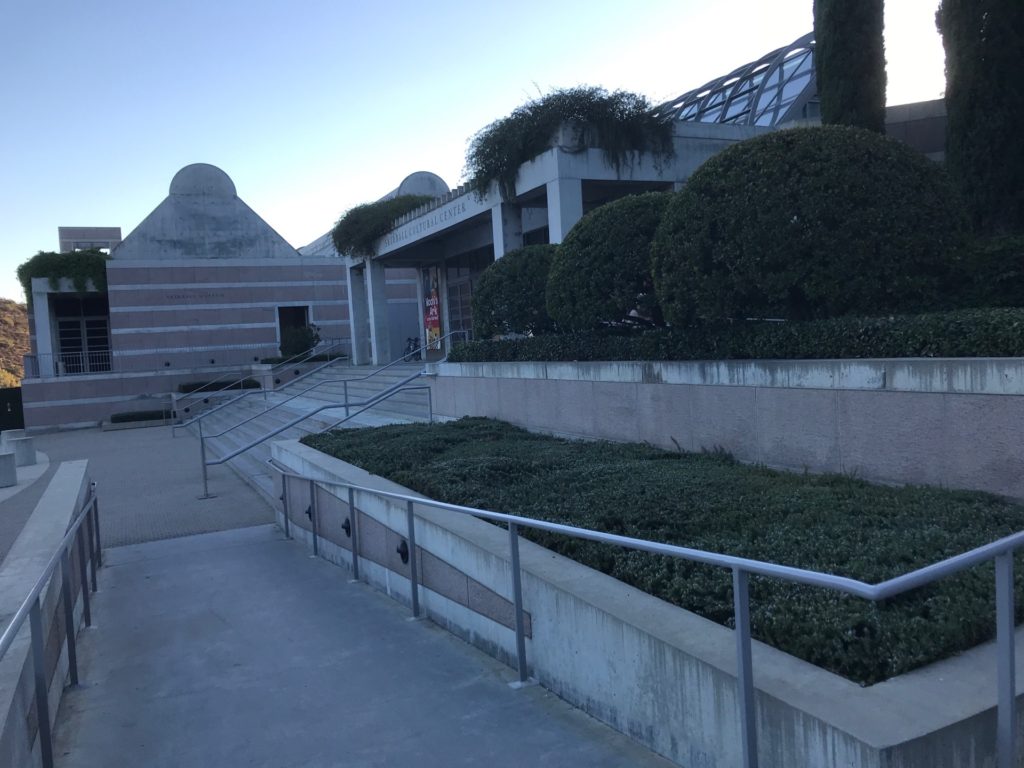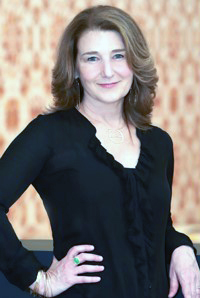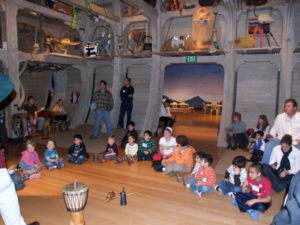
By Donald H. Harrison


SAN DIEGO – Nearly four decades have rushed by since the day that Sheri L. Bernstein served as a high school docent at the San Diego Museum of Art, during which she learned all she could about one of the paintings on exhibit and recited to visitors what she knew.
In the first two decades since then, Bernstein graduated Patrick Henry High School in 1983; earned a bachelor’ss degree in art history from Yale University and a master’s in the same field from Harvard University. She learned the skills of museum administration at the Institute of Contemporary Art in Boston, and the Smithsonian American Art Museum in Washington D.C. Thereafter, she returned to California to the Los Angeles County Museum of Art. During her six years there, she co-organized a five-part exhibition, California: Art, Image, and Identity, 1900-2000.

All that training led to the next two decades of Bernstein’s life as an executive in charge of education and the visitor experience at the Skirball Cultural Center in Los Angeles, an institution that she proudly says combines the Jewish mandate to pursue justice with the American aspirations of building community and equality for all. One of her creations at the Skirball is the permanent and popular 8,000-square-foot Noah’s Ark exhibit in which, she says, children of all races, religions, and ethnic backgrounds meet animals fashioned from repurposed materials and have a safe, and creative place in which to play and to learn “how we can all survive together.”
Just this week, it was announced that Bernstein will become on July 1 the next director of the Skirball Cultural Center’s large and engaging museum.
Of course, I was anxious to learn what goals Bernstein will set for the museum, which is located off the Sepulveda Pass between West Los Angeles and the San Fernando Valley. But in our interview, I also succumbed to hometown San Diego pride and wanted to linger on some of the early influences on the new director, who is the daughter of retired internist Dr. Leonard Bernstein and the late water colorist Sandra Bernstein.
Living in the Del Cerro neighborhood of San Diego, she went first to Marvin Elementary School, then transferred to Hearst Elementary to take advantage of its gifted seminar program, and moved on to Lewis Junior High (today Lewis Middle School) and next to Patrick Henry High School.
She was part of a cohort of four creative girls who remain friends until today, the other three being Sharon (Merrow) Cuseo, the dean of the Harvard Westlake School in Los Angeles; San Diego attorney Renee Schor, and Portland Jewish Academy 6th and 7th grade humanities teacher Harriet Wingard.
“I remember one time Sheri and I went up to Solana Beach and wrote a poem together about our friendship, and then sent it out to sea – a poem in a bottle,” Wingard reminisced. “Sheri was always a talented artist like her mom, who painted. Everything around her was aesthetically beautiful. She always saw beauty everywhere, both in the art world and the natural world. She integrates not only her love of art and aesthetics but she is a people person. She has intellect, warmth and curiosity.” Yet, despite Bernstein’s accomplishments, Wingard said, “Sheri can be so self-deprecating. It doesn’t surprise me one iota that she was named as the director, but she might be surprised by it.”
Her father Leonard told me that a cherished memory of her childhood was of evening walks around their Del Cerro neighborhood. It was “just the two of us, discussing our experiences for that day and usually ending our walks by me giving her creative math lessons by hypothetically imagining plane flights going a certain distance at a certain rate of speed over an unknown period of time.”
It was serendipitous that one of the first visiting exhibits to be presented at the Skirball during her tenure as director will be all about the Star Trek television and movie franchise in which the mixed earthling and alien crews of the starship Enterprise “boldly go where no man has gone before” over a distance that Bernstein and her father might have enjoyed calculating.
Discussing the exhibit with me, Bernstein noted that the series creator Gene Roddenberry had encouraged actors to contribute parts of their own cultures to the series, leading Leonard Nimoy, who played the Vulcan science officer Mr. Spock, to suggest that Vulcans could wish each other to “live long and prosper” with fingers forming the Hebrew letter Shin utilized in Judaism’s priestly benediction.
Bernstein’s own Jewish outlook was shaped, in part, by the late Rabbi Samuel Penner of the Conservative Congregation Beth Tefilah, which some time ago was merged into Ohr Shalom Synagogue.
“He was such a deeply learned person,” Bernstein recalled in our interview. At Beth Tefilah, she said, she appreciated “being part of a community where I felt welcome. That’s one of the things that I am passionate about at the Skirball. One of its main goals is to be a gathering place where people feel they belong.”
Although Bernstein’s mother was frail because of a long-lasting lung ailment, they were able to spend memorable moments together visiting Balboa Park. “I loved spending time at the San Diego Museum of Art; I loved the Reuben H. Fleet (Science Center), the fact that it was an interactive space. I also loved the interactivity of the Botanical Gardens. And I loved the Museum of Man, where today Micah Parzen (another member of San Diego’s Jewish community) is the director.”
Were the excursions to Balboa Park formative? Were they what prompted her to go into the museum field?
No, she responded, it was actually the late Professor Robert Herbert with whom she had studied at Yale University. “He was a deeply principled, down-to-earth scholar and human being who told me that art could be a window into understanding history–the life of people, the injustices, the courage, all the aspects of human existence—in addition to being a source of beauty. He took me under his wing, and it changed me. The fact that he was so down to earth was a piece of it. The Skirball is a very down-to-earth institution. People are valued equally as human beings.”
As the Skirball Museum director, Bernstein said, “I want to build on the idea of using contemporary art as a vehicle for pursuing justice in a way that inspires people emotionally versus approaching subjects in a pedantic way. That is something from my art history background that I am interested in building upon.”
Bernstein will work closely with Jessie Kornberg, President and CEO of the overall Skirball Cultural Center, who also has San Diego connections. Her aunt and uncle, Eydie and Richard Kornberg, are longtime residents of La Jolla.
Bernstein said she has set four goals for herself and the museum:
–“To create soulful, beautiful, surprising exhibitions that speak to our unique Skirball mission as a Jewish cultural center –using the arts to help bring people together and inspire wonder, foster exchange, and promote justice.”
–“To work with collaborators in creating exhibitions that are dynamic and timely – including artists, community partners, and others, as we did with Noah’s Ark and a number of successful temporary exhibitions, including one of my favorites, Women Hold Up Half the Sky.
–“To conceptualize and design exhibitions with our audience firmly in mind – working to ensure that our exhibitions leave visitors feeling welcome, included, engaged, and we hope, inspired and even galvanized to act.
“To activate our entire campus with exhibition experiences, and utilizing our beautiful outdoor spaces as well as the museum galleries.”
An example of what Bernstein has in mind is a current exhibit, Tightrope: Americans Reaching for Hope, which will continue virtually through May 31. Based on the work of the Pulitzer Prize winning husband and wife team of Nicholas Kristof and Sheryl WuDunn, with photography by Lynsey Addario, it examines some of the pitfalls that impoverished Americans face including addiction, incarceration, being unhoused, lack of health care, and issues of children and families.
Besides movingly documenting people in their despair, the exhibit suggests ten ways in which viewers can live up the Jewish ideal of “welcoming the stranger.” They are “Support education, become a mentor, tackle one issue, sponsor a child, be an ambassador, break taboos, volunteer at a shelter or an organization for the u nhoused, use your economic power, blaze your own path, and donate.”
As she takes over the directorship of the Skirball Museum, Bernstein anticipates similarly combining the “aesthetically pleasing” with moral inspiration.
*
Donald H. Harrison is editor of San Diego Jewish World. He may be contacted via donald.harrison@sdjewishworld.com